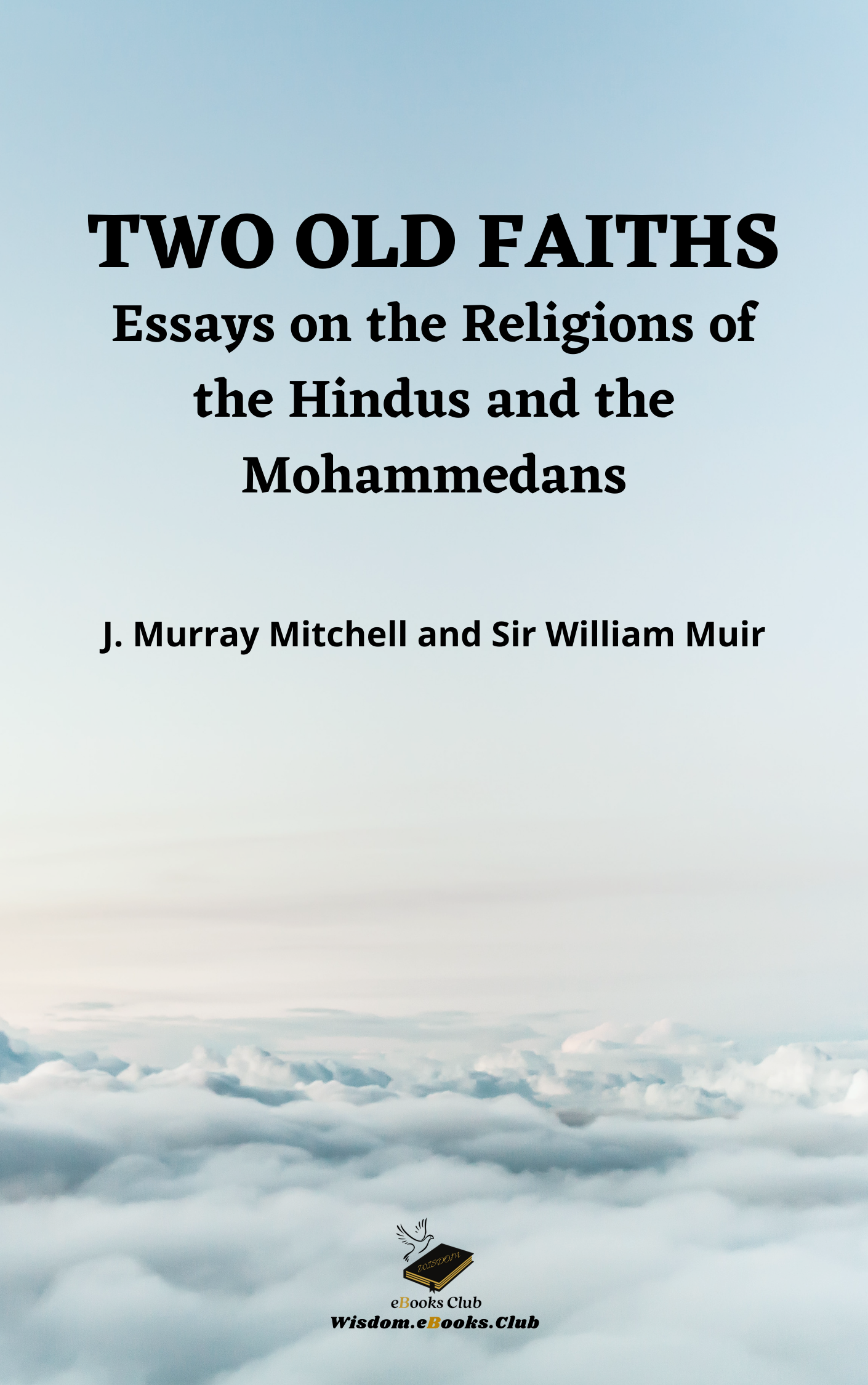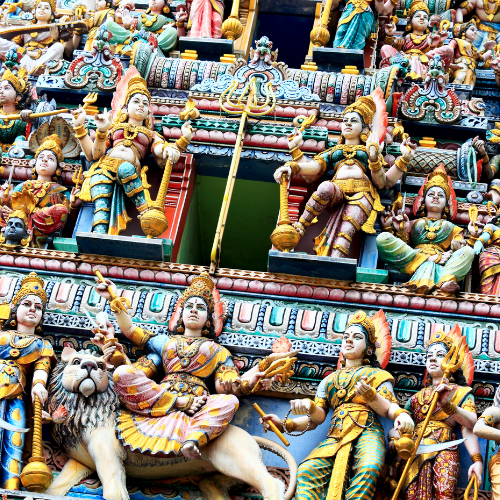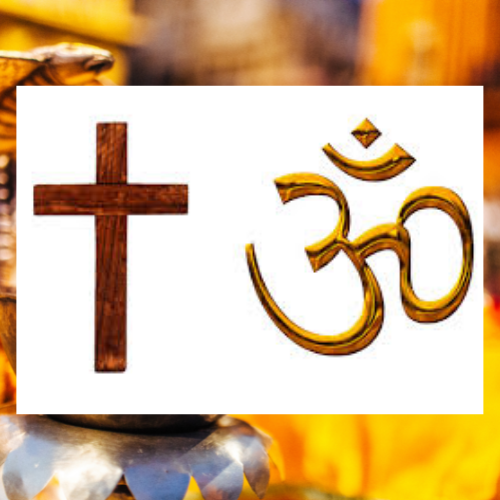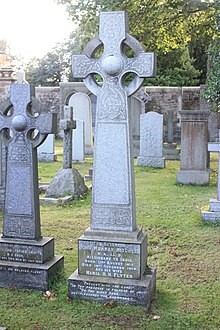Two Old Faiths
Essays on the Religions of the Hindus and the Mohammedans

The relation between these two major theological practices in South Asia are often characterized as one of civilizational or cultural conflicts, disputes, and discontinuities. Popular stories of South Asia’s religious history often contrast Hinduism’s tolerance of diversification, innate spirituality, and rootedness in the Indian land with Islam’s moral rigidity, innate militancy, and foreignness. Such necessities, which gained dominance during the age of British imperialism, neglect to realize that, as complex social and cultural paradoxes, religions undergo historical transformation. A critical appraisal of the relationship between Hinduism and Islam accounts for several histories involving subtle experiences, exchanges, and modifications, and overt confrontation and conflict. A more exact and varied collection of attitudes emerges, revealing how Hinduism and Islam interact with each other, and with alternative social, cultural, and political developments in South Asia through time.
Hinduism and Islam share some ritual actions such as fasting and pilgrimage, but dissent in their opinions on apostasy, blasphemy, circumcision, blood relation in marriages, idol making, henotheism, social stratification, vegetarianism, and Ahimsa (non-violence) as a virtue. Their historical interaction since the 7th century has seen cycles of unity and syncretism, and stretches of religious violence. As a minority denomination in India, Islam adapted to local Hindu customs and the Hindu roots of followers over 13 centuries. The barriers between Islam and Hinduism remained flexible until British colonial control.

Hinduism is rare among the world’s religions. It is humankind’s oldest spiritual declaration, the first practice of faith on the earth. Hinduism’s honorable age has hardened it to maturation. It’s the sole religion, which was not formed by a specific significant event or prophet, but which itself precedes recorded history. Hinduism has been hailed the “cradle of spirituality,” and the “mother of all religions,” because it influenced every major religion and because it can assimilate all other religions, laud and welcome their scriptures, their saints, and their doctrine.
Hinduism shares familiar terms with the other Indian religions, including Buddhism, Jainism and Sikhism. Islam shares common attributes with Abrahamic religions, those religions alleging lineage from the prophet Abraham, including Judaism and Christianity. Hinduism is a sympathetic doctrine because it considers alternative religions as divergent paths to the same target. Hinduism teaches all souls will reincarnated until they attain Samadhi or another yoga’s equivalent.
The term Hinduism does not adequately represent the intricacy of an ancient theology that once prevailed over half of the earth. Many Hindus aren’t even knowledgeable about what it represents or what constitutes Hinduism. Concealed within its depths are diverse customs and spiritual traditions that are sometimes conflicting and unconnected.
There are a billion Hindus on the planet, that’s 3 times the population of the United States. That makes one out of every 8 people on earth a Hindu. It is the lone religion that possesses such scope and magnitude. Hinduism has the Deities, and the consecrated temples, the mystical knowledge of inner states of consciousness, yoga and the disciplines of meditation. It maintains a tender mercy and a sincere tolerance and appreciation for different doctrines. It remains undogmatic and receptive to scrutiny. It believes in a just world in which every human being is led by karma to the preeminent objective of Self Realization, leading to moksha, freedom from rebirth. It is satisfied in the recognition of the eternal origin of the soul, its transition through one life and another until maturation has been achieved. It provides direction to all who accept it, from the nonbeliever to the most evolved maharishi. It preserves the greatest compilation of scripture and religious ideology on the earth, and the most ancient. It is enriched with a heritage of saints and sages, of accomplished men and women, unequaled on the earth.

There is not a heavy connection between Hinduism and Christianity. Christianity is about the life of Jesus Christ as set forth in the Bible, whereas Hinduism is not based on any one in particular or on any specific book, instead on the doctrine that there is a god, or no god and just self, etc. Still, some academics have examined whether there are associations between the story of Jesus Christ and that of Krishna; “Krishnology” is a word used to communicate these claimed doctrinal parallels between Krishnaism and the Christological precepts of Christianity.
The way Christian-Hindu directly connect to each other is rather mixed. Historically Hinduism has tendered to acknowledge the spiritual significance of other religions, and to worship their founders and followers. The declaration Nostra aetate by the Second Vatican Council formally accepted inter-religious communication between Catholics and Hindus, advocating shared qualities between the two doctrines. With more than 17 million Catholics in India, fewer than 2% of the country’s population, it is the biggest Christian denomination in India.
Rev John Murray Mitchell
 Grave of Rev John Murray Mitchell
Grave of Rev John Murray Mitchell
-
The Rev Dr John Murray Mitchell LLD, best known to as Murray Mitchell, was born on August 19, 1815 in the manse at Garvock near Aberdeen, Scotland and died on November 14, 1904. Mitchell passed at South Leith manse, his brother Very Rev James Mitchell’s home in Leith, on 14 November 1904. John was buried in the city’s Dean Cemetery, in the first northern extension, behind his brother’s grave.
-
Murray Mitchell was a Scottish missionary and orientalist who worked in his home country, India and France. His parents, Rev James Mitchell and his wife Margaret Gordon, had 7 other children. After being educated in Kinneff, Kincardineshire and a year at Aberdeen Grammar School, he went to the city’s Marischal College in 1829.
-
He graduated with an MA in 1833 and later studied for the church ministry, in Aberdeen and subsequently in Edinburgh. The Church of Scotland ordained him in July 1838.
-
Mitchell was dispatched to Bombay, India, to accompany some missionary colleagues of the Church of Scotland in November 1838. There he was allowed to satisfy his intrigue in languages, for which he had previously won accolades during his studies. He quickly mastered Marathi and also studied Sanskrit and Zend.
-
The discord in the Church of Scotland in 1843 caused Mitchell to leave it for the newly founded Free Church of Scotland. The next year, he went to Nagpur with Stephen Hislop to start a new mission. He often travelled from that base to talk with resident people, generally in their native jargon. In 1846 he returned to Scotland because of the declining health of his spouse, Maria Hay Mackenzie née Flyter, whom he had wed in Bombay on December 22, 1842. Mitchell returned alone to India before the end of 1846.
Publications
Among Mitchell's writings were:
-
Letters to Indian Youth
-
Memoir (1858), of his missionary colleague Robert Nesbit, whom he had joined in Bombay at the outset of his career
-
Hinduism, Past and Present (1885)
-
In Western India (1899), a partial autobiography
-
The Great Religions of India (1905), published posthumously and based on his Duff Lectures of 1903
Sir William Muir
 Sir William Muir
Sir William Muir
-
Born on April 27, 1819 in Glasgow, Scotland and passed on July 11, 1905 in Edinburgh, Scotland and is entombed in Dean Cemetery was Sir William Muir of the Order of the Star of India. Sir William was a Scottish Orientalist, and colonial official, Principal of the University of Edinburgh and Lieutenant Governor of the North-West Provinces of India.
-
He was schooled at Kilmarnock Academy, the universities of Glasgow and Edinburgh, and Haileybury College. In 1837 he joined the Bengal civil service. Muir worked as clerk to the governor of the North-West Provinces, and as an adherent of the Agra revenue board, and during the Mutiny he led the intelligence department there.
-
He was schooled at Kilmarnock Academy, the universities of Glasgow and Edinburgh, and Haileybury College. In 1837 he joined the Bengal civil service. Muir worked as clerk to the governor of the North-West Provinces, and as an adherent of the Agra revenue board, and during the Mutiny he led the intelligence department there.
-
Sir William Muir wed Elizabeth Huntly on February 7, 1840 and they had 15 children. later he became foreign secretary to the Indian Government in 1865, was knighted (K.C.S.I.) in 1867, and became lieutenant-governor of the North Western Provinces in 1868.
-
Muir was interested in scholarly matters, and it was through his efforts that the central college at Allahabad, known as Muir Central College, was established and funded. Muir College subsequently belonged to Allahabad University. In 1884 Muir was voted president of the Royal Asiatic Society. They appointed him principal of the University of Edinburgh in 1885, and occupied the office until he retired in 1903.
-
Muir was an Islamic religious academic; he was an authority of history during the era of Muhammad and the early caliphate. His principal publications are: A Life of Mahomet and History of Islam to the Era of the Hegira; Annals of the Early Caliphate; The Caliphate: Its rise, decline and fall, an abridgment and continuation of the Annals, which brings the record down to the fall of the caliphate on the onset of the Mongols; The Koran: its Composition and Teaching; and The Mohammedan Controversy, a reprint of five manuscripts printed from 1885 to 1887. In 1888 he gave the Rede lecture at Cambridge on The Early Caliphate and Rise of Islam.
Publications
-
The Life of Muhammad and History of Islam to the Era of the Hegira
- Vols. 1–2 published in 1858 by Smith, Elder, & Co.
- Vols. 3–4 published in 1861 by Smith, Elder, & Co. together with a reprinting of the first two volumes; title shortened to The Life of Muhammad. -
The life of Muhammad from original sources
- 2nd abridged one-volume ed. of the above published in 1878, xi+errata slip, xxviii, 624 pp. London: Smith, Elder, & Co.
- 3rd abridged ed. published in 1894 by Smith, Elder, & Co., ciii, 536 p.
- posthumously revised ed. by Thomas Hunter Weir published in 1912 as The life of Mohammad from original sources, cxix, 556 pp. -
The Mameluke or Slave Dynasty of Egypt, 1260–1517 AD, end of the Caliphate
-
The Caliphate: Its rise, decline and fall
-
The Apology of al-Kindy, 1882
-
The Sources of Islam, A Persian Treatise, by the Rev. W. St. Clair-Tisdall, translated and abridged by W. M. 1901. Edinburgh, T & T Clark.
-
Records of the Intelligence Department of the Government of the North-West Provinces of India during the Mutiny of 1857 including correspondence with the supreme government, Delhi, Cawnpore, and other places. 1902. 2 vols, Edinburgh, T & T Clark.
-
Two Old Faiths: Essays on the Religions of the Hindus and the Mohammedans. J. Murray Mitchell and Sir William Muir. 1901. New York: Chautauqua Press.
-
Muhammad and Islam
-
The Rise and Decline of Islam
-
The Lord's Supper: an abiding witness to the death of Christ
-
Sweet First-Fruits. A tale of the Nineteenth Century, on the truth and virtue of the Christian Religion
-
The Beacon of Truth; or, Testimony of the Coran to the Truth of the Christian Religion, 1894
-
The Mohammedan Controversy, 1897
-
James Thomason, lieutenant-governor N.-W. P., India, 1897
-
The Teaching of the Coran
-
The Opium Revenue (1875)
To see more information about this topic or other religious topics, you may check the books and magazines available at www.wisdomebooksclub.com or visit our peals of wisdom page page by clicking on this link to access more interesting blog articles, games, quizzes, music videos, religious poems, Jewish recipes, popular sermons, and more.
